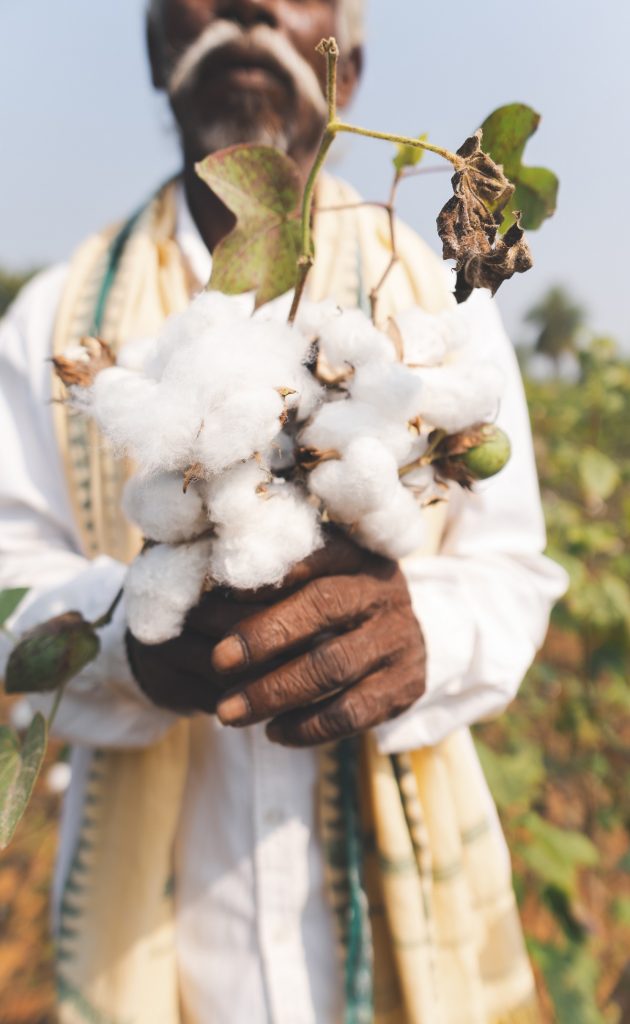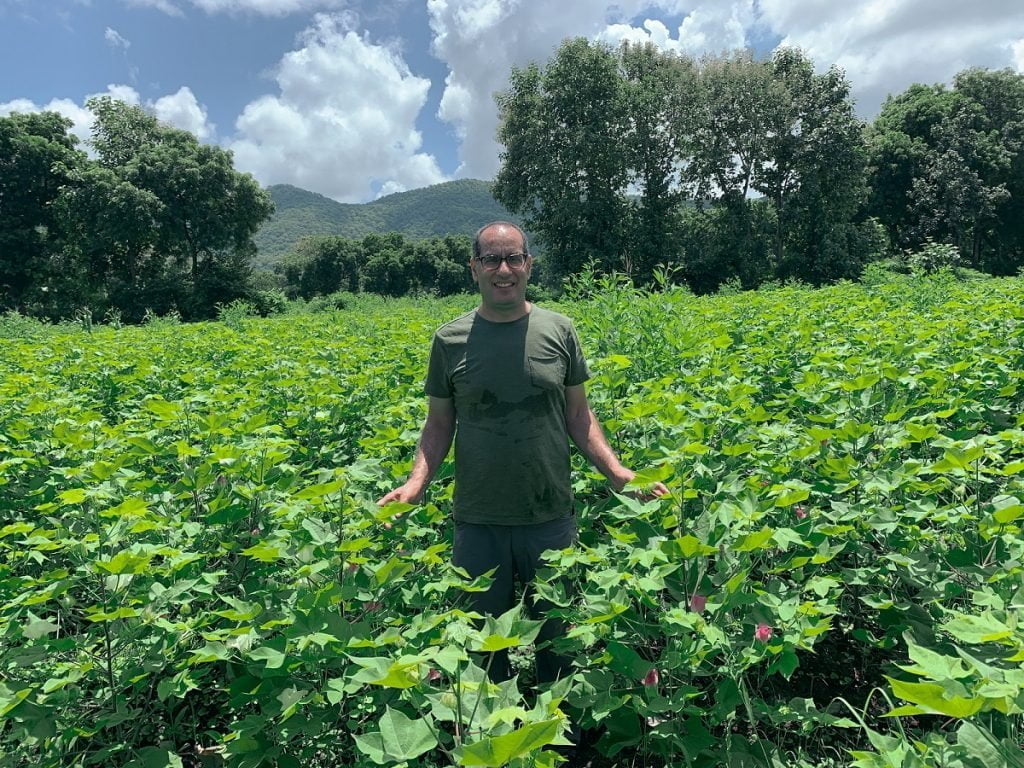A Closer Look Into The Differences Between Conventional and Organic Cotton Production – On Society, Workers, and the Environment.
Put together by the team at Terra Thread, producers of sustainable backpacks and bags.
Conscious shoppers have stopped walking to the beat of the fast fashion’s drum. No longer willing to tolerate the annual release of half a million tonnes of microfibres into the oceans to fill the closets around the world.
Ecologically responsible fabrics that use minimal resources are defining the characteristics of shopping wishlists, with organic cotton contending for the first place. Now, the likes of virgin polyester (or similar fibers) receive the highest eco-blame over its counterparts. Disliked for consuming nearly 70 million barrels of oil every year, and yet being amongst the most widely used fiber in the garment industry. But bring conventional cotton into the equation, and the plot thickens.
The constant spotlight on the plastic/ petroleum attributes of polyester foreshadows most of the conventional cotton’s drawbacks- allowing it to keep contributing silently to the planet’s unregulated injuries. Perhaps it is the right time to consider every factor (from production to market-ready) and look at the damages caused by conventional cotton.
Cotton Statistics
Here’s a quick gander at cotton statistics—
Production Facts
- Cotton is grown on 2.5% of all available arable land, nearly 35 million hectares in over 100 countries.
- China is the top producer with 6.42 MMT, India is the second with 6.12 MMT, and the third is the United States with 3.18 MMT (2020/21).
- The global cotton market was valued at US $38.54 billion in 2020 and is predicted to reach US $46.56 billion between 2020 to 2027.
Environmental Impact Facts
- A million metric tonnes of non-organic cotton fiber produces 1.8 million metric tonnes of carbon dioxide.
- A study done on rainwater for (pesticide check) revealed the presence of 19 harmful chemicals, out of which 12 were revealed to be used on cotton.
- Consuming about 10,000 liters of water to produce one kilogram of cotton, cotton loots over 250 billion tonnes of water per year on a global scale.
- Textile waste accounts for 11.3 million tonnes of MSW in landfills.
- About one-fifth of the world’s industrial water pollution comes from textile mills.
- The Aral Sea, once the fourth-largest inland water body, now nestles in remnants as a direct consequence of intensive cotton production.
- The global annual water footprint of cotton is around 8.2 trillion cubic feet.
Social Impacts
- Cotton employs 7% of the total labor force in developing countries, with over 90% of the farmers farming on less than 2 hectares of land.
- Fire accidents in the fashion industry supply chain around the world are a regular occurrence. Example— 66 fires in March and 57 fires in April (2020).
- A report survey (Bangladesh and India) reveals that 85% of female garment workers are afraid to be sexually harassed at work. Meanwhile, 65% of male participants admit to facing sexual harassment up to certain points.
- Some of the world’s largest cotton exporters force around 1.5 and 2 million children, as young as ten years old (and below), to pick cotton in deplorable conditions during harvest season.
Cotton production is linked to a slew of environmental and social challenges. Making every contributor involved in the production and supply chain system burn the midnight oil. Despite being a $38.54 billion global industry, it backslides a multitude of sustainability challenges, most of which are deeply embedded within the sector’s foundation– the fiber.
How to Address these Issues
So, what can be done to change the current atmosphere?
Stopping cotton production completely would be nearly impossible, which is why a more efficient cotton-growing method is the next best option. Organic cotton is a more environmentally friendly option than conventional cotton, emerging as the solution to addressing the problems of the latter. A study estimates organic cotton to have the potential to reduce—
- 26% in eutrophication
- 46% of global warming
- 62% of primary land energy demand
- 70% in acidification.
- 91% of blue water consumption
Organic cotton is the smarter choice for consumers ready to invest a little more for their clothes and shoes, and of course, health. The demand for organic cotton is rapidly gaining momentum— a record-breaking year in 2019/20 with 249,153 tonnes of organic cotton fiber production (largest volume to date). India is the world’s largest organic cotton producer. Meanwhile, here in the United States, Texas Organic Cotton Marketing Cooperative (TOCMC) and the ProCot Cooperative are leading the way.

Cultivated without the use of agrochemicals and employing humanity on a scale that conventional cotton couldn’t possibly contend, both the market demand and organic cotton production are predicted to keep expanding.
What exactly is fueling this spread? Why is organic cotton a better option for the environment and people?
Benefits of Certified Organic Cotton
No Pesticides
Conventional cotton accounts for about 16% of insecticides released globally and uses 6% of the world’s pesticides.
Every year, pesticide poisoning impacts millions of people and causes about 20,000 deaths. Along with it, it also destroys wildlife. Experts estimate 10% kill of the total 672 million birds in the US owing to pesticide exposure on agricultural lands.
On the other hand, organic cotton is free of pesticides which ensures safer consumption of clothing and accessories, lowering human and wildlife fatalities.
Amity Between Humans and Nature
The relationship between organic farmers and nature is carried with goodwill between the two sides. Ethical stewardship of natural resources.
Organic cotton farmers avoid agrochemicals and instead use biopesticides which act as a fertilizer, providing a haven for pollinating organisms that keep tabs on cotton pests. Organic cotton is produced in organic agricultural systems that generate fiber according to the highest established standards.
It seeks to build biologically diverse agricultural systems, replenish and maintain soil fertility, promote a healthy environment, and sustain the prosperity of humans.
Wearing Your Beliefs
While organic cotton is currently cultivated in less than 1% of the world’s cotton farms, this isn’t entirely on farmers.
Contracts with industry buyers are the architecture to accelerate the growth of the organic cotton market. Ethical, innovative brands that will empower farmers to make the switch. Consumers can also help shift this paradigm by increasing demand and supporting conscious brands offering organic cotton.
It can persuade companies (who are still behind) to incorporate organic cotton into their products.


How to Verify if a Brand Uses Organic Cotton
Businesses practicing ethical operations have no compunctions about revealing the pathways of the supply chains on their website or labels. Certifications are an excellent source to help determine the same.
Organic Cotton Certification
Organic cotton production certification lends credibility to the finished product, informs buyers of the product’s organic status, and incentivizes farmers with premium prices for organic practices. Further, certification establishes standards, ensures brands comply with the standards, and conveys the compliance to consumers through labels. A certified organic label indicates an independent organization’s substantiation that the company fulfills outlined organic standards. Certified organic farms are also monitored regularly, and required to maintain an account of their production processes. When purchasing sustainable, organic cotton items, here are some certifications to look out for—
- GOTS (Global Organic Textile Standards)
- Organic Content Standards
- NOP (National Organic Program)
- USDA Organic
- IFOAM (International Federation of Organic Agriculture Movements)

Future Hopes for Organic Cotton Production
The waves are shifting— consumers are paying more attention to what they purchase and wear. All findings demonstrate that the coming generation of consumers is more likely to choose to wear their beliefs on their sleeve, refusing to be a part of something predatory. Urging brands to change their practices and mitigate eco-social misconducts in their supply chain operations.
The mission to transform the way organic cotton is cultivated and facilitate a higher level of transparency is keeping several conscious brands awake at night. Taking giant leaps farther into their sustainability initiatives by diving into the regenerative agriculture farming methods— a farming solution that rewards the ecosystems in which the crop is grown. Regenerative Organic Alliance (2018) promotes regenerative organic farming as the highest standard for agriculture worldwide. It was founded by Patagonia, Dr. Bronner’s, and the Rodale Institute to repair and restore the damages by enabling farmers and consumers through enhanced farming.
A more recent brand to step into regenerative agriculture and offer Regenerative Organic CertifiedTM products is Gallant International. Gallant successfully transitioned 3,500 acres of land to Regenerative Organic Certified™ making it one of the largest ROC projects in cotton globally.
Gallant is a California-based B Corp, offering custom cosmetic bags wholesale, muslin bags bulk, organic cotton apron. Gallant’s products are made using 100% organic cotton and manufactured in factories that support fair trade standards.

Being the most widely used natural fiber in the world, cotton is going to be around for a long time. To ensure the most favorable outcome and consumption that benefits the entire planet, businesses, distributors, manufacturers, producers, farmers and consumers must collaborate on organic cotton production and supply.